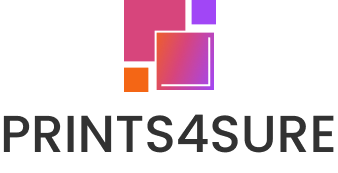Visual art and music have danced around each other for centuries, each influencing the other in myriad ways. In today's dynamic art scene, creatives are keen on syncing visual art with sound for an enhanced auditory experience, birthing the concept of Musical Murals. These murals, larger than life and vibrant, don't just capture the eye but also the ear, embodying the essence of songs and rhythms.
One captivating approach is incorporating elements that reflect an individual's musical tastes, such as visually representing the chaotic beauty of jazz with abstract, swirling patterns or the pulsating energy of electronic music through neon strokes and geometric shapes.
Another innovative method is turning sound waves into art, where artists transform the unique soundwave patterns of favorite songs into visual masterpieces, creating a personal and profound connection between music and the viewer. This fusion not only celebrates music in a visual format but also invites viewers into a more immersive, multisensory experience, bridging the gap between auditory and visual arts.
Reflecting Musical Tastes in Visual Elements
Jazz Influence
Jazz, with its complex rhythms, improvisation, and emotional depth, finds a visual counterpart in abstract forms and swirling patterns. The visual representation of jazz often involves spontaneous, flowing lines that mimic the music's free-form nature. An exemplary case is the mural found in the heart of New Orleans, where artist Joe King brilliantly used a chaos of colors and shapes to portray the soulful and improvisational qualities of jazz. The mural not only resonates with the rich jazz history of the area but also serves as a vibrant tribute to the genre's legends, translating their sounds into visual art.
Electronic Music Visualization
Electronic music, known for its pulsating beats and vibrant tones, inspires artwork characterized by neon strokes, geometric shapes, and a futuristic vibe. These elements visually echo the energy and rhythm of electronic music. A standout piece in this domain is the "SynthWave Wall" in Berlin, created by digital artist Max Cooper. This mural uses glowing neon lines against a dark background to simulate the electrifying and immersive experience of electronic music, literally lighting up its urban surroundings and providing a visual beat for the viewer's imagination.
Rock and Roll Vibes
Rock and roll's energy and edge are perfectly mirrored in visual art through the use of bold lines, dynamic figures, and a dark, intense color palette. Murals and artworks inspired by rock often feature iconic rock figures, electric guitars, and motifs that evoke the spirit of rebellion and freedom intrinsic to the genre. In London, the "Legends of Rock" mural features larger-than-life portraits of rock icons like Jimi Hendrix and Freddie Mercury, surrounded by stark, dynamic designs that capture the explosive impact of rock music. This will not only commemorate the legends but also visually amplify the raw power and emotion of rock and roll.
Sound Waves as Artistic Inspiration
Sound Wave Art Fundamentals
Transforming music’s invisible vibes into tangible visual art, sound wave art captures the essence of favorite melodies through their unique acoustic signatures. This form starts with the digital capture of a song's sound waves, transforming these audible elements into visual patterns. These pieces hold aesthetic and sentimental value, fostering a deep personal connection with the viewer. It allows individuals to visualize the melodies that emotionally resonate with them, making sound wave art uniquely personal and meaningful.
Technical Process
The creation of sound wave art marries art with technology. Using audio editing software like Audacity or Adobe Audition, artists visualize a song’s sound waves. These images are then stylized, colored, and enhanced according to the artist's vision before being transferred onto mediums such as canvas, digital screens, or interactive installations. This process blends technical precision with creative expression, resulting in personalized visual art.
Examples of Sound Wave Art
This diverse art form spans genres from classical to rock. One example is the “Vivaldi's Four Seasons” project, which visualizes the classical piece's melodies into season-themed sound wave patterns, color-coded for each season. Leonard Cohen’s “Hallelujah” is another, with its sound waves transformed into art that captures the song's emotional depth. Additionally, an artist depicted a couple’s wedding song as a sound wave, creating a bespoke piece that serves as a lasting memory of their special day. These examples illustrate sound wave art’s power to connect and resonate on a profoundly personal level.
Bridging Auditory and Visual Experiences
Interactive Musical Murals
The evolution of musical murals into interactive experiences represents a groundbreaking merge between art and technology. By integrating sound systems or embedding QR codes, these murals invite viewers not just to see but to listen, effectively turning passive observation into an active engagement. When a viewer scans a QR code or activates an embedded sound system, the corresponding music breathes life into the visual elements, deepening the narrative and emotional resonance of the artwork. This immersive approach not only enhances the viewer's connection with the art but also encourages a more profound appreciation of the music it represents. Interactive musical murals thus become dynamic cultural artifacts that engage the senses in a multi-dimensional exploration of musical genres and histories.
Public and Urban Spaces
In public and urban landscapes, musical murals serve as vibrant nodes of cultural expression and communal experience. These artworks transform ordinary spaces into hubs of creativity and interaction, where people from diverse backgrounds can share moments of collective awe and inspiration. The presence of musical murals in such spaces does not just beautify them but also democratizes art and music, making them accessible to all. Furthermore, by depicting genres or musicians specific to a community's cultural heritage, these murals can strengthen communal identity and pride. They invite pedestrians to pause, reflect, and connect—not only with the art and the music it celebrates but also with each other, weaving a richer, more interconnected urban tapestry.



